
Crans-Montana: The Alpine Jewel of Switzerland
Discover Crans-Montana, the ultimate Swiss alpine resort offering year-round activities, stunning scenery, and a perfect blend of adventure and relaxation.
Crans-Montana, nestled in the heart of the Swiss Alps, is a dream destination for nature lovers and adventure seekers alike. This stunning alpine resort boasts breathtaking views of snow-capped peaks, pristine lakes, and lush green meadows. Whether you visit in the winter for skiing and snowboarding or in the summer for hiking and golfing, Crans-Montana offers an array of outdoor activities to suit all tastes. In winter, the resort transforms into a snowy wonderland, with over 140 kilometers of ski slopes catering to all levels. From beginners to seasoned pros, everyone can find their perfect run. The region also offers cross-country skiing, snowshoeing, and ice skating, making it a true winter sports paradise. After a day on the slopes, unwind in one of the cozy alpine chalets or savor Swiss cuisine in a mountain restaurant. During the warmer months, Crans-Montana becomes a haven for hikers and golfers. The resort's extensive network of trails provides ample opportunities to explore the stunning alpine scenery, from gentle walks to challenging hikes. Golf enthusiasts will revel in the resort's championship courses, which offer panoramic views and world-class facilities. Additionally, the area hosts a variety of cultural events, festivals, and markets, ensuring there is always something to see and do.
Local tips in Crans-Montana
- Visit during the off-peak season for fewer crowds and lower prices.
- Pack layers; weather in the mountains can change quickly.
- Try the local Swiss specialties like fondue and raclette.
- Book ski passes and equipment in advance during the winter season.
- Use the local free shuttle service to get around the resort.
Crans-Montana: The Alpine Jewel of Switzerland
Crans-Montana, nestled in the heart of the Swiss Alps, is a dream destination for nature lovers and adventure seekers alike. This stunning alpine resort boasts breathtaking views of snow-capped peaks, pristine lakes, and lush green meadows. Whether you visit in the winter for skiing and snowboarding or in the summer for hiking and golfing, Crans-Montana offers an array of outdoor activities to suit all tastes. In winter, the resort transforms into a snowy wonderland, with over 140 kilometers of ski slopes catering to all levels. From beginners to seasoned pros, everyone can find their perfect run. The region also offers cross-country skiing, snowshoeing, and ice skating, making it a true winter sports paradise. After a day on the slopes, unwind in one of the cozy alpine chalets or savor Swiss cuisine in a mountain restaurant. During the warmer months, Crans-Montana becomes a haven for hikers and golfers. The resort's extensive network of trails provides ample opportunities to explore the stunning alpine scenery, from gentle walks to challenging hikes. Golf enthusiasts will revel in the resort's championship courses, which offer panoramic views and world-class facilities. Additionally, the area hosts a variety of cultural events, festivals, and markets, ensuring there is always something to see and do.
When is the best time to go to Crans-Montana?
Iconic landmarks you can’t miss
Chapel Bridge
Explore the historic Chapel Bridge in Lucerne, a stunning wooden marvel adorned with art and surrounded by breathtaking Swiss landscapes.
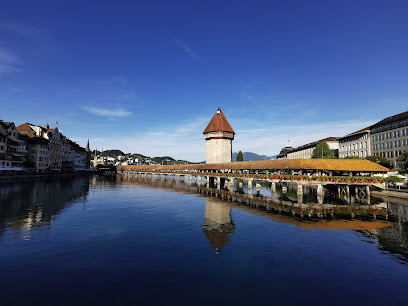
Chetzeron Hotel & Restaurant
Discover luxury and adventure at Chetzeron Hotel & Restaurant, where stunning alpine views meet exceptional dining in Crans-Montana.
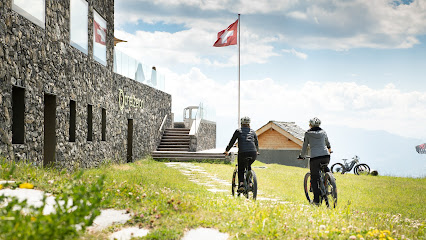
Hotel Helvetia Intergolf
Discover the elegance and comfort of Hotel Helvetia Intergolf in Crans-Montana, where luxury meets breathtaking alpine beauty and exceptional dining.

Hôtel du Lac
Experience the serene beauty of Crans-Montana at Hôtel du Lac, where comfort meets stunning alpine views and exquisite dining.

Cabane des Violettes CAS
Discover the flavors of Switzerland at Cabane des Violettes, a charming restaurant in Crans-Montana, surrounded by breathtaking alpine views.
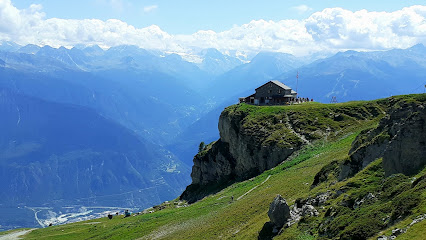
Maison du Tourisme de Crans-Montana
Explore the stunning Swiss resort of Crans-Montana with expert guidance from the Maison du Tourisme, your hub for adventure and local culture.
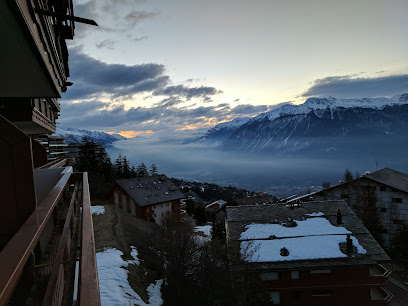
Bisse du Ro
Discover the serene beauty of Bisse du Ro, an ancient irrigation canal offering stunning views and a glimpse into Switzerland's rich agricultural heritage.
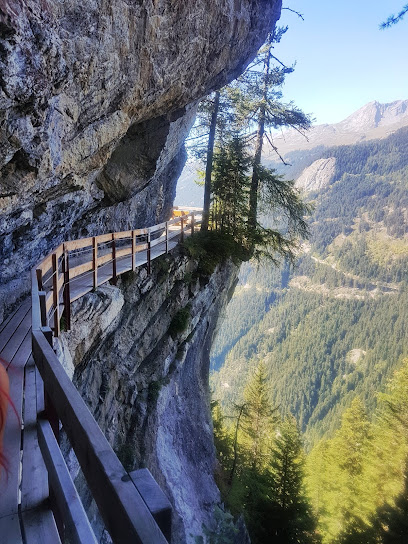
Hôtel Elite
Experience unparalleled luxury and stunning alpine views at Hôtel Elite, the premier destination in Crans-Montana for discerning travelers seeking the perfect getaway.

Cabane De La Tièche
Experience authentic Swiss cuisine at Cabane De La Tiêche in Crans-Montana, with breathtaking views and a cozy alpine ambiance.
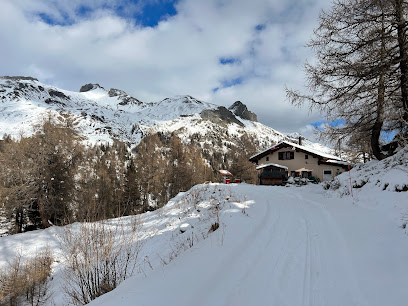
Paulette Vocat, Buvette de Pépinet
Experience authentic Swiss flavors at Paulette Vocat, Buvette de Pépinet, nestled in the stunning landscapes of Crans-Montana.
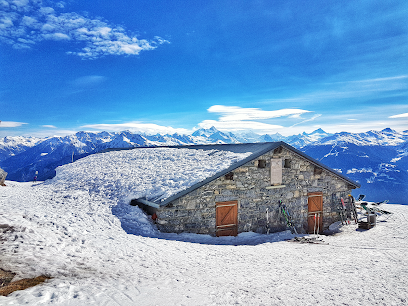
Adrenatur - Fun Forest
Experience thrills and breathtaking views at Adrenatur - Fun Forest, the ultimate amusement park for adventure sports in Crans-Montana, Switzerland.

Hameau De Colombire
Explore Hameau De Colombire: A unique Swiss destination blending museum culture, gourmet dining, and outdoor adventures in breathtaking Crans-Montana.
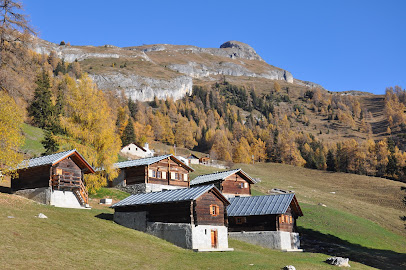
Cry d'Er
Experience the breathtaking views and outdoor adventures at Cry d'Er, a stunning mountain peak in the heart of the Swiss Alps.
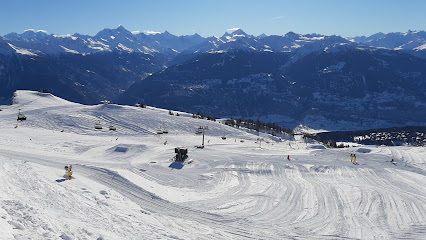
Beeheidi
Discover the great outdoors with Beeheidi, the premier sport tour agency offering unforgettable adventures in stunning natural landscapes.
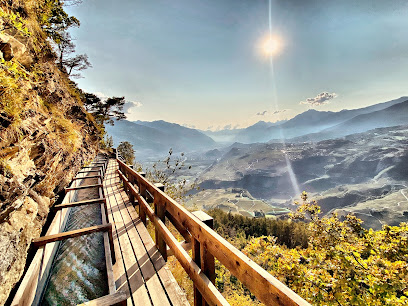
Sentier des Ecureuils
Discover the tranquil beauty of Sentier des Ecureuils in Crans-Montana, a perfect trail for nature lovers and families amidst stunning alpine vistas.

Unmissable attractions to see
Lac Souterrain De Saint-Léonard
Discover the captivating beauty of Lac Souterrain De Saint-Léonard, a stunning underground lake perfect for adventure and serenity.
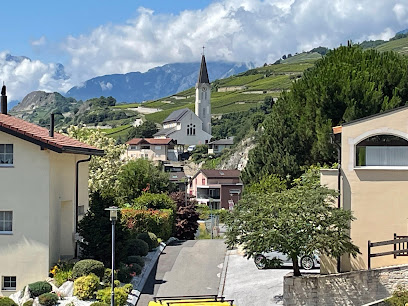
Schloss Oberhofen
Explore the captivating beauty and rich history of Schloss Oberhofen, a stunning castle overlooking Lake Thun in Switzerland.
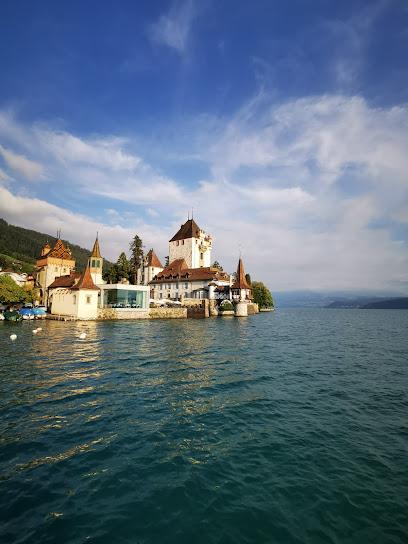
Naturpark Pfyn-Finges
Discover the stunning landscapes and rich biodiversity of Naturpark Pfyn-Finges, a must-visit destination for nature lovers in Switzerland.
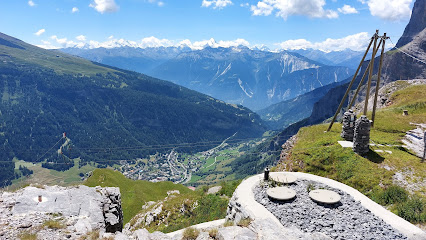
Matterhorn Museum - Zermatlantis
Explore the rich heritage of Zermatt and the iconic Matterhorn at the Matterhorn Museum - Zermatlantis, a captivating local history museum.
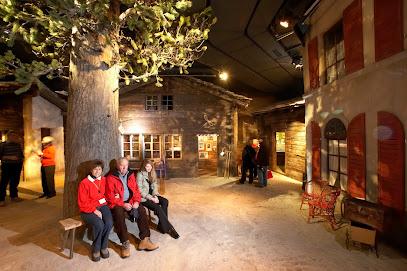
Happyland
Experience the thrill of rides, the joy of family fun, and delightful dining at Happyland, Sierre's ultimate amusement park.
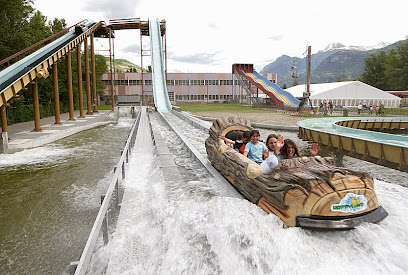
La Passerelle à Farinet
Experience the thrill of La Passerelle à Farinet, a stunning suspension bridge in Saillon, surrounded by breathtaking hiking trails and picturesque views.
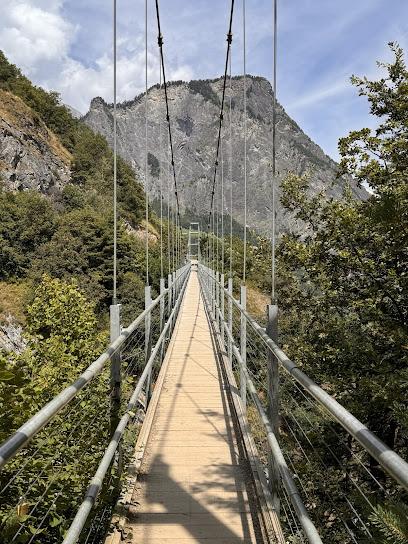
Naturschutzgebiet Weissenau
Explore the natural beauty of Naturschutzgebiet Weissenau, a serene nature preserve perfect for hiking and wildlife observation in Unterseen, Switzerland.
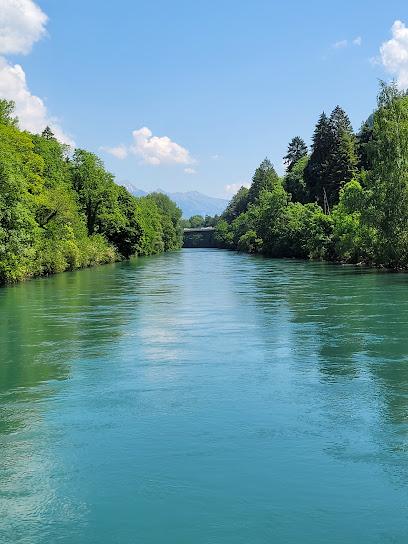
Pfarrkirche St. Mauritius
Explore the enchanting Pfarrkirche St. Mauritius, a serene Catholic church in Zermatt, offering stunning architecture and breathtaking views of the Matterhorn.
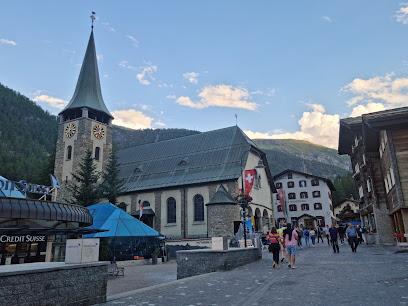
Espace Ludique OBABAO
Discover Espace Ludique OBABAO, a vibrant amusement park in Venthône, Switzerland, where fun meets adventure for the whole family.
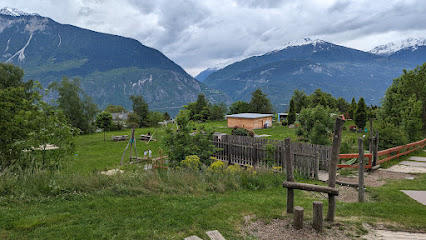
Niederhorn
Experience the breathtaking beauty and adventure at Niederhorn, a stunning mountain peak in Switzerland's Bernese Oberland, perfect for nature lovers and thrill seekers alike.
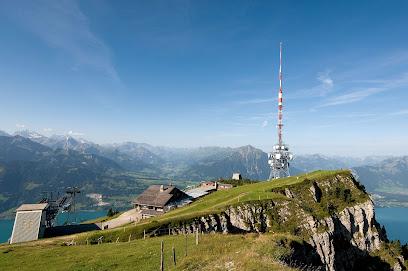
BUNGY NIOUC
Experience the ultimate thrill of bungee jumping at BUNGY NIOUC, surrounded by breathtaking Swiss Alpine views.
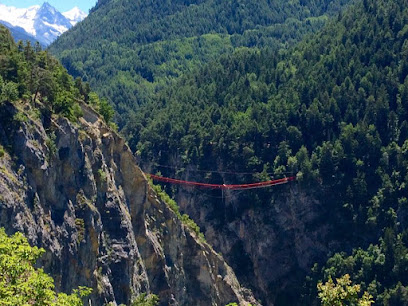
Mürren Tourismus
Explore the stunning Swiss Alps at the Mürren Tourismus Center, your gateway to adventure in the charming village of Mürren.
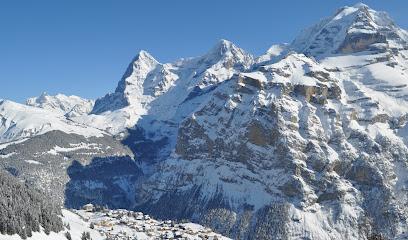
Chemin des Lanternes - Laternenweg
Explore the enchanting Chemin des Lanternes in Crans-Montana, where illuminated paths and stunning alpine views create a magical promenade experience.

Grand Bisse d'Ayent
Explore the Grand Bisse d'Ayent, a breathtaking hiking trail in the Swiss Alps, offering serene landscapes, rich history, and stunning views.
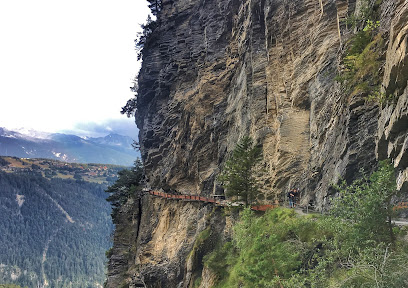
Place d'Ycoor
Explore Place d'Ycoor, the heart of Crans-Montana, Switzerland, where stunning views and local culture come together in perfect harmony.
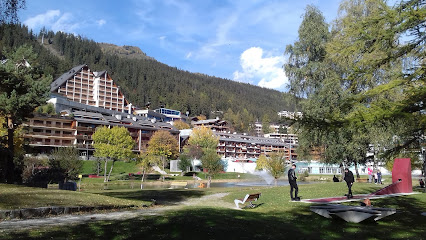
Essential places to dine
Molino
Experience authentic Italian flavors at Molino in Crans-Montana - where every meal is crafted with love and passion.

Burger Lounge
Savor gourmet hamburgers in Crans-Montana's Burger Lounge – where quality meets flavor in an inviting atmosphere.
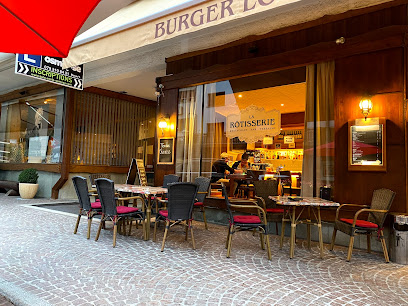
Chez Chico Parrilla Argentina
Experience the essence of Argentinian cuisine at Chez Chico Parrilla Argentina in Crans-Montana—where every meal is a celebration of flavor.
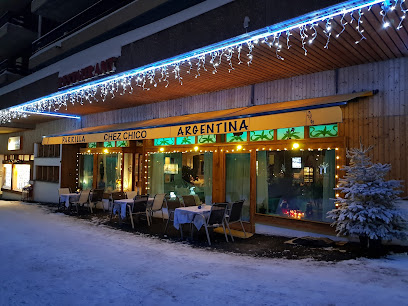
Le Mayen
Experience authentic Swiss dining at Le Mayen in Crans-Montana—where fondue dreams come true amidst breathtaking alpine views.
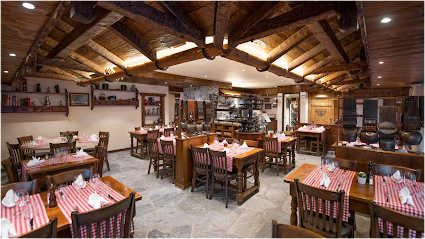
Oliveto
Experience the taste of Southern Italy at Oliveto in Crans-Montana—where every dish tells a story and every dessert is a delight.
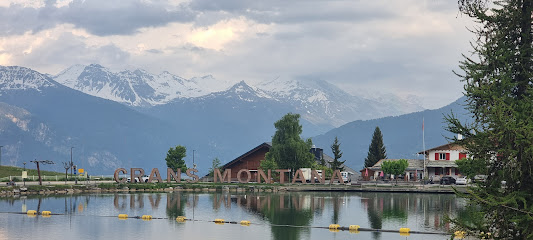
La Plage
Experience authentic Swiss cuisine at La Plage in Crans-Montana, offering fresh seafood and delightful dishes in a family-friendly setting.

Le Chalet
Discover the charm of Swiss cuisine at Le Chalet in Crans-Montana, where delicious flavors meet breathtaking mountain views.

La Désalpe
Discover authentic Swiss cuisine at La Désalpe in Crans-Montana - where tradition meets breathtaking alpine views.
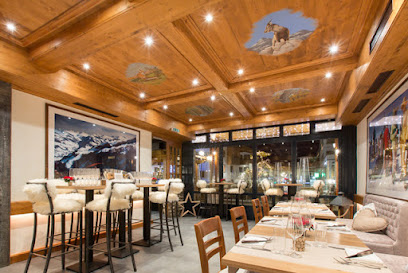
Restaurant Le Farinet
Experience authentic Italian cuisine at Restaurant Le Farinet in Crans-Montana - where every dish tells a story amidst stunning alpine views.
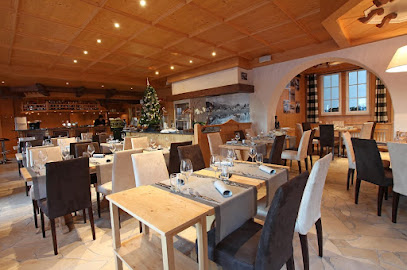
Café-Bar 1900
Experience exquisite flavors at Café-Bar 1900 in Crans-Montana—a delightful blend of café charm and gastropub vibrance amidst stunning mountain views.
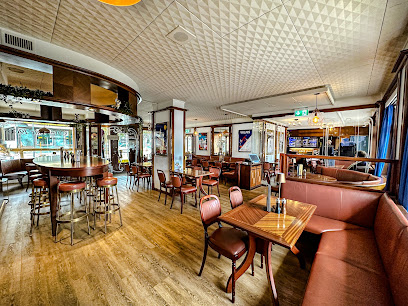
Le Continental Restaurant
Experience exquisite French dining at Le Continental Restaurant in Crans-Montana with stunning alpine views.
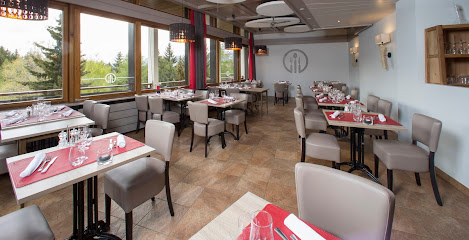
Restaurant Le Thaï
Experience the authentic taste of Thailand at Restaurant Le Thaï in Crans-Montana – where flavor meets mountain beauty.
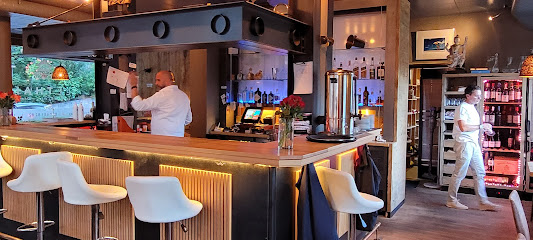
La Rôtisserie
Experience culinary excellence at La Rôtisserie in Crans-Montana—where expertly grilled meats meet stunning mountain views.
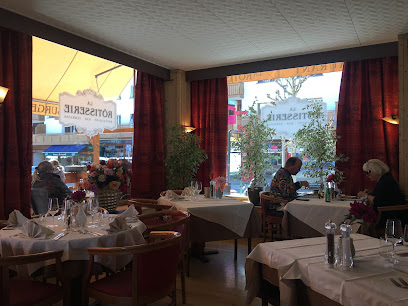
Viva Voce
Experience authentic Italian cuisine at Viva Voce in Crans-Montana - where delicious flavors meet enchanting live piano melodies.
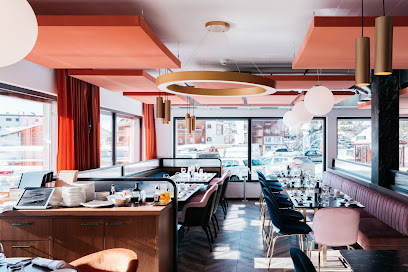
Restaurant le Plaza
Discover culinary excellence at Restaurant le Plaza in Crans-Montana - where authentic Italian cuisine meets Swiss hospitality.
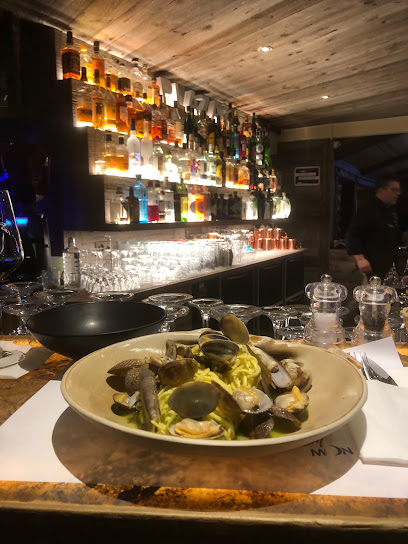
Markets, malls and hidden boutiques
Louis Vuitton Crans-Montana
Discover the pinnacle of luxury shopping at Louis Vuitton Crans-Montana, where elegance meets breathtaking alpine beauty.
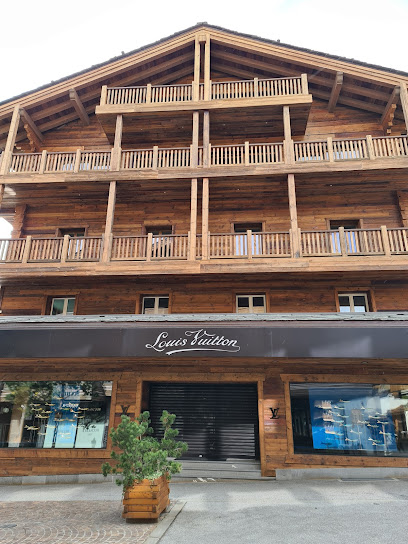
ALEX SPORTS LES BOUTIQUES SA
Discover the best in sporting goods, clothing, and equipment rentals at ALEX SPORTS, the ultimate hub for outdoor enthusiasts in Crans-Montana.
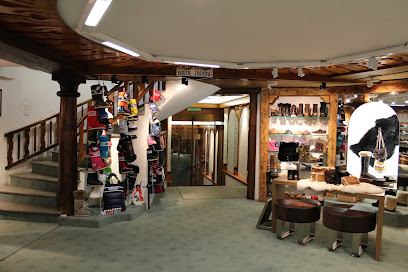
Avalanche Pro Shop
Avalanche Pro Shop in Crans-Montana: Your one-stop destination for sporting goods, rentals, and expert advice for all outdoor adventures.
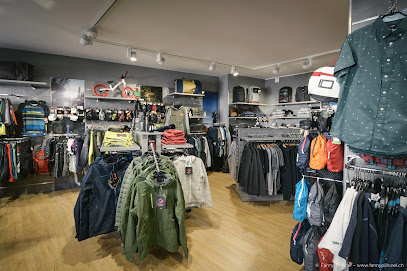
Mabillard SA : Aux Arts Ménagers - Quincaillerie - Boutique
Experience the charm of Crans-Montana with unique shopping at Mabillard SA, your one-stop destination for hardware, clothing, and novelty items.
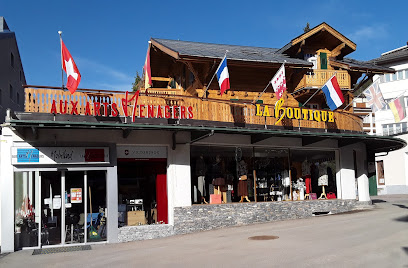
Moncler
Discover a world of luxury at Moncler boutique in Crans-Montana, where style meets the Swiss Alps in high-end fashion.
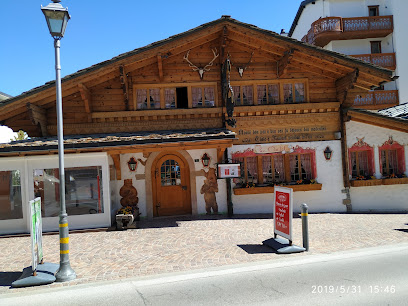
Le Boudoir
Explore Le Boudoir in Crans-Montana for unique gifts and local artisan treasures that embody the beauty and culture of Switzerland.
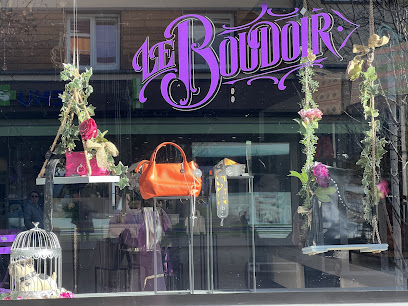
Street Contact
Explore Crans-Montana's premier clothing shop for stylish apparel and unique accessories amidst the stunning Alpine scenery.
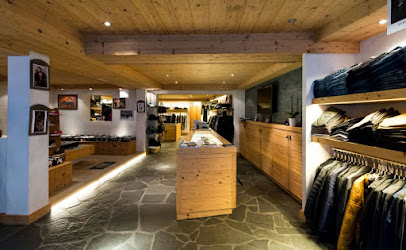
VIETTI
Explore the finest selection of high-end fashion at VIETTI, Crans-Montana's premier clothing boutique, where style meets sophistication.
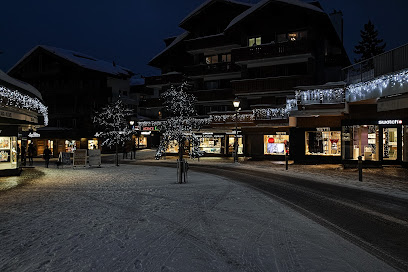
Annick A. Luxury Second Hand
Discover sustainable luxury shopping at Annick A. Luxury Second Hand in Crans-Montana, offering designer pieces at incredible prices.
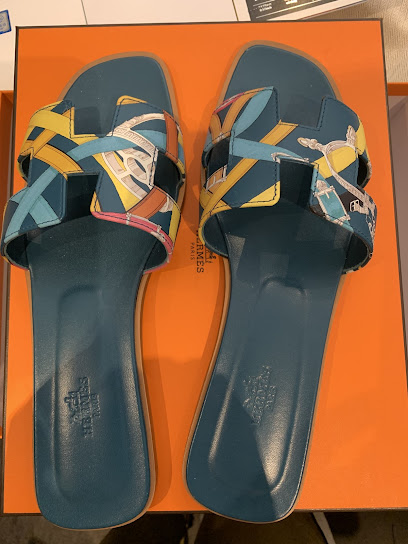
Kookaï
Explore the fashion-forward world of Kookaï in Crans-Montana, where style meets sophistication in a breathtaking alpine setting.
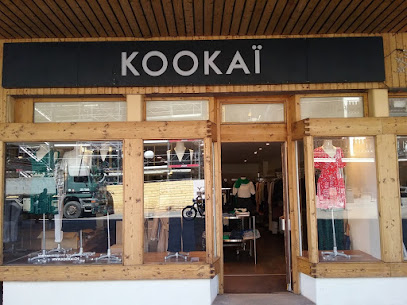
Boutique Montblanc Crans - Montana
Discover luxury and craftsmanship at Boutique Montblanc in Crans-Montana, a premier destination for exquisite writing instruments and watches.
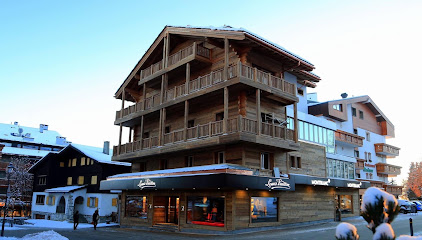
Boutique Carmelo Crans montana
Explore Boutique Carmelo in Crans-Montana for high-quality clothing and bespoke tailoring services in a charming alpine setting.
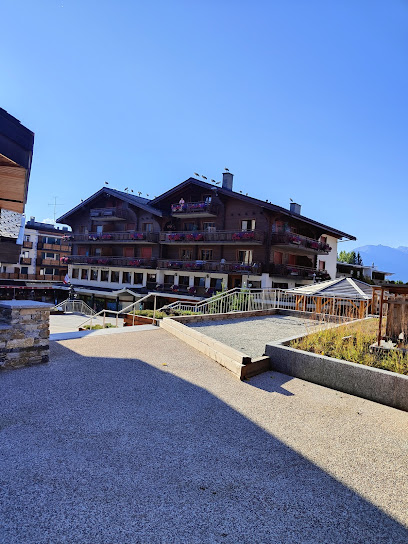
KA/NOA Boutique Crans Montana
Discover the essence of elegance at KA/NOA Boutique, Crans Montana's premier destination for men's fashion and tailored excellence.
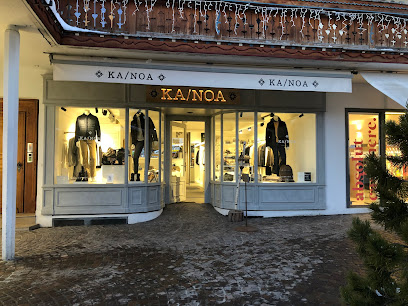
FUSALP CRANS-MONTANA
Explore FUSALP Crans-Montana for luxury alpine fashion that blends style and function, perfect for your winter adventures.
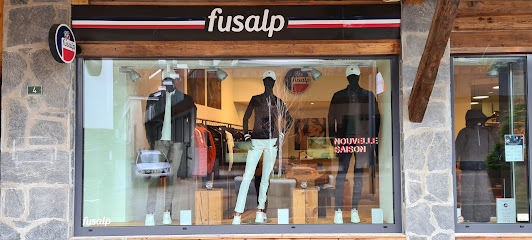
La Frileuse SA
Discover La Frileuse SA in Crans-Montana for exquisite lingerie and stylish clothing, perfect for every occasion and every age.
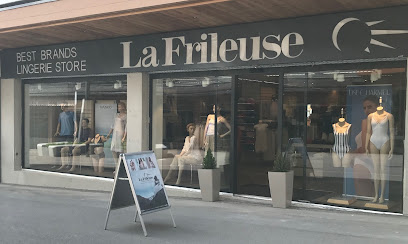
Essential bars & hidden hideouts
Zerodix
Experience the best of Crans-Montana at Zerodix, where delectable cuisine meets stunning alpine views in a luxurious setting.
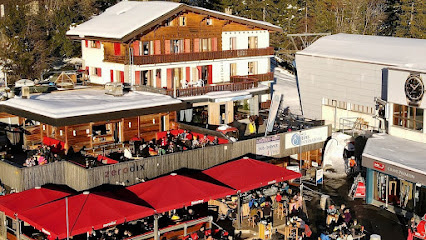
MOSAIC
Experience the best of Mediterranean and European cuisine at MOSAIC in Crans-Montana, where every meal is a delightful journey for your taste buds.

Café-Bar 1900
Discover the culinary charm of Café-Bar 1900 in Crans-Montana, where delightful small plates and local brews meet breathtaking mountain views.
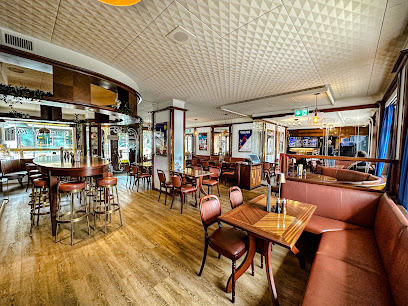
Memphis Lounge Bar
Discover the lively Memphis Lounge Bar in Lens - a perfect blend of delicious drinks and vibrant atmosphere for an unforgettable night out.
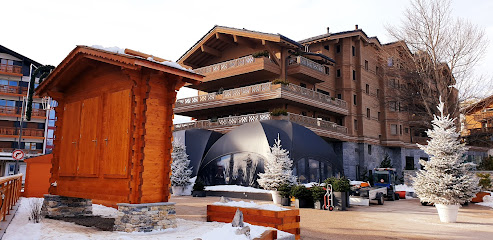
Le Constellation
Experience the gem of Crans-Montana at Le Constellation, where exquisite cocktails, fine coffee, and pastries await in a cozy atmosphere.

New Pub
Discover the vibrant atmosphere and refreshing drinks at New Pub, a cozy gem in the heart of Crans-Montana, perfect for relaxation after alpine adventures.
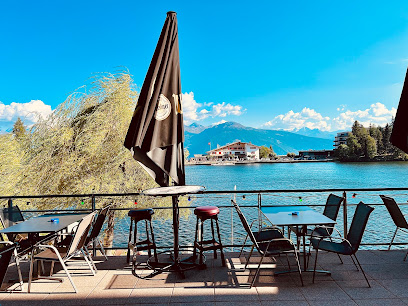
Le Senso
Discover Le Senso in Crans-Montana, where gourmet burgers and succulent steaks meet a vibrant lounge atmosphere for an unforgettable dining experience.
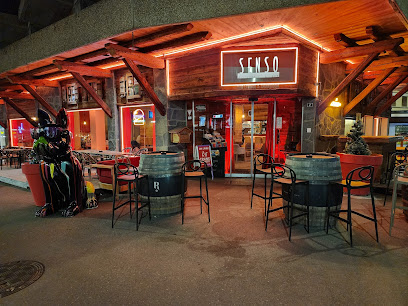
Monk'is Bar
Experience the vibrant nightlife of Crans-Montana at Monk'is Bar, a top destination for cocktails, tapas, and dancing under the stars.
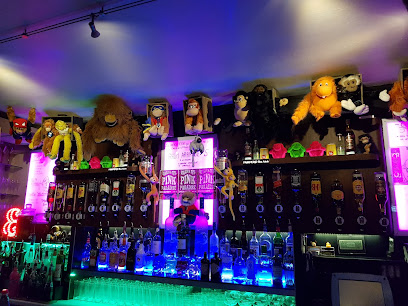
Bellavista Istanbul Restaurant & Shisha Bar
Explore a fusion of Turkish flavors and stunning mountain views at Bellavista Istanbul Restaurant & Shisha Bar in Crans-Montana.
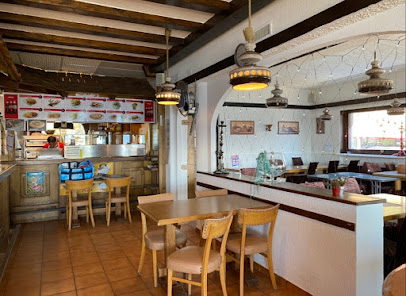
Restaurant le Plaza
Experience the exquisite flavors of Italy at Restaurant le Plaza in Crans-Montana, where every meal is a celebration of culinary artistry and local charm.
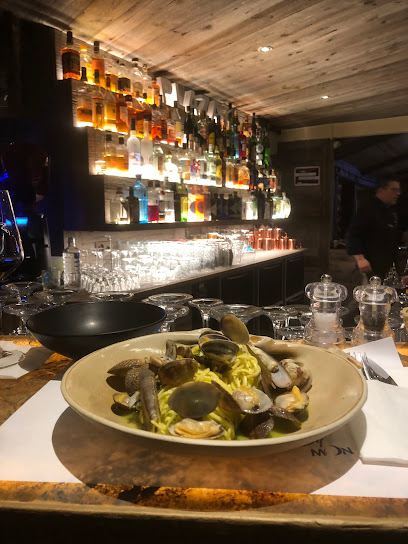
Café le Postillon
Experience the charm of Café le Postillon in Crans-Montana, where delicious cuisine meets stunning alpine views in a cozy atmosphere.
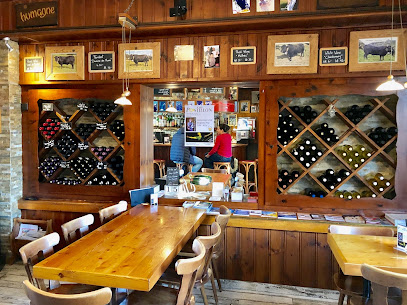
Yuki Lounge Bar & Restaurant
Discover the perfect blend of dining and nightlife at Yuki Lounge Bar & Restaurant in the heart of Crans-Montana.
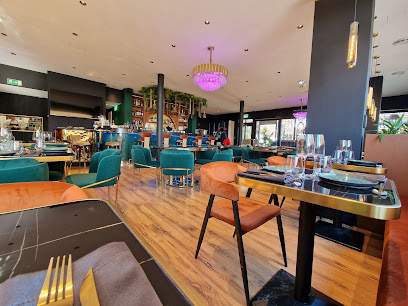
Beach Club
Discover the Beach Club in Crans-Montana for refreshing drinks and breathtaking alpine views, a perfect spot for relaxation and fun.
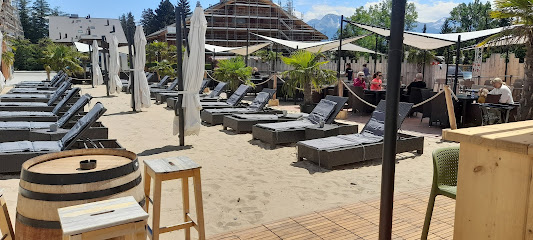
Le Tirbouchon
Discover the charm of Crans-Montana at Le Tirbouchon, featuring an exquisite selection of wines in a cozy, inviting atmosphere.
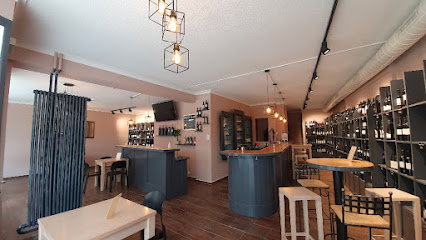
Amadeus Bar
Discover the charming Amadeus Bar in Crans-Montana, where delightful drinks and a cozy atmosphere await every traveler seeking local flavor.
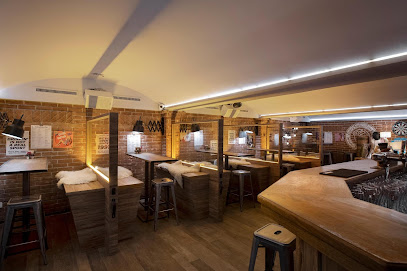
Local Phrases about Crans-Montana
-
- HelloBonjour
[bon-zhoor] - GoodbyeAu revoir
[oh-rev-wahr] - YesOui
[wee] - NoNon
[noh] - Please/You're welcomeS'il vous plaît
[seel-voo pleh] - Thank youMerci
[mehr-see] - Excuse me/SorryExcusez-moi
[ex-kew-zay mwa] - How are you?Comment ça va?
[koh-mon sah vah] - Fine. And you?Bien. Et vous?
[byen. ay voo] - Do you speak English?Parlez-vous anglais?
[par-lay voo ahn-glay] - I don't understandJe ne comprends pas
[zhuh nuh kohm-prahnd pah]
- HelloBonjour
-
- I'd like to see the menu, pleaseJe voudrais voir la carte, s'il vous plaît
[zhuh voo-dray vwahr lah kart, seel voo pleh] - I don't eat meatJe ne mange pas de viande
[zhuh nuh mahnj pah duh vee-ahnd] - Cheers!Santé!
[san-tay] - I would like to pay, pleaseJe voudrais payer, s'il vous plaît
[zhuh voo-dray pay-ay, seel voo pleh]
- I'd like to see the menu, pleaseJe voudrais voir la carte, s'il vous plaît
-
- Help!Au secours!
[oh suh-koor] - Go away!Allez-vous en!
[ah-lay vooz ahn] - Call the Police!Appelez la police!
[ah-peh-lay lah poh-lees] - Call a doctor!Appelez un médecin!
[ah-peh-lay uh may-deh-sahn] - I'm lostJe suis perdu
[zhuh swee pair-doo] - I'm illJe suis malade
[zhuh swee mah-lahd]
- Help!Au secours!
-
- I'd like to buy...Je voudrais acheter...
[zhuh voo-dray ah-shet-ay] - I'm just lookingJe regarde juste
[zhuh ruh-gard zhust] - How much is it?Combien ça coûte?
[kohm-byen sah koot] - That's too expensiveC'est trop cher
[say troh shair] - Can you lower the price?Pouvez-vous baisser le prix?
[poo-vay voo bay-say luh pree]
- I'd like to buy...Je voudrais acheter...
-
- What time is it?Quelle heure est-il?
[kell er ay-teel] - It's one o'clockIl est une heure
[eel ay oon er] - Half past (10)Dix et demie
[dee ay duh-mee] - MorningMatin
[mah-tan] - AfternoonAprès-midi
[ah-pray mee-dee] - EveningSoir
[swahr] - YesterdayHier
[yair] - TodayAujourd'hui
[oh-zhoor dewee] - TomorrowDemain
[duh-man] - 1Un
[uhn] - 2Deux
[duh] - 3Trois
[twah] - 4Quatre
[kat] - 5Cinq
[sank] - 6Six
[sees] - 7Sept
[set] - 8Huit
[weet] - 9Neuf
[nurf] - 10Dix
[dee]
- What time is it?Quelle heure est-il?
-
- Where's a/the...?Où est...?
[oo ay...] - What's the address?Quelle est l'adresse?
[kell ay lahd-res] - Can you show me (on the map)?Pouvez-vous me montrer (sur la carte)?
[poo-vay voo muh mohn-tray (sir lah kart)] - When's the next (bus)?Quand est le prochain (bus)?
[kahn ay luh proh-shahn (bus)] - A ticket (to ....)Un billet (pour ...)
[uhn bee-yay (poor ...)]
- Where's a/the...?Où est...?
History of Crans-Montana
-
The area now known as Crans-Montana has been inhabited since the Bronze Age, with archaeological evidence pointing to early settlements in the region. During medieval times, the region was a part of the Sierre parish and was primarily used for agriculture and pastoral activities. The strategic location of the area made it a valuable asset for local feudal lords.
-
The late 19th and early 20th centuries marked the beginning of Crans-Montana's transformation into a tourist destination. Swiss physician Dr. Théodore Stephani played a crucial role in promoting the region's health benefits, leading to the establishment of sanatoriums and the first hotels. The construction of the funicular railway in 1911 further boosted accessibility and tourism.
-
Crans-Montana became renowned for winter sports in the mid-20th century. The first ski lift was installed in 1951, and the area quickly gained a reputation as a premier skiing destination. The Alpine Ski World Cup has been hosted here multiple times, attracting international athletes and visitors.
-
Crans-Montana hosts a variety of cultural events and festivals throughout the year. The Crans-Montana Classics, a series of classical music concerts, and the Caprices Festival, which features electronic music, are key highlights. These events have helped shape the cultural identity of the region.
-
In recent decades, Crans-Montana has focused on sustainable development, balancing tourism with environmental preservation. Initiatives such as eco-friendly hotels, sustainable skiing practices, and the promotion of local culture and heritage have been implemented to ensure the region's long-term viability.
Crans-Montana Essentials
-
Crans-Montana is located in the heart of the Swiss Alps, in the canton of Valais. The nearest major airport is Geneva International Airport, approximately 180 kilometers away. From Geneva, you can take a direct train to Sierre, which takes around two hours. From Sierre, a funicular or bus ride will take you up to Crans-Montana in about 12-15 minutes. Alternatively, you can rent a car and enjoy a scenic drive through the Swiss countryside.
-
Crans-Montana is well-connected by public transport. Local buses run frequently and connect various parts of the town as well as nearby attractions. The funicular from Sierre to Crans-Montana is a popular and efficient option. Taxis are readily available, although they can be quite expensive. For those looking to explore the region at their own pace, renting a car is a convenient option, especially for trips to remote areas or ski resorts.
-
The official currency in Switzerland is the Swiss Franc (CHF). Credit and debit cards are widely accepted in hotels, restaurants, and shops throughout Crans-Montana. ATMs are plentiful, so withdrawing cash is convenient. It's advisable to carry some cash for smaller establishments or for services like taxis and local markets.
-
Crans-Montana is generally a very safe destination for tourists. Switzerland has low crime rates, and the area is known for its security. However, it is always advisable to take standard precautions such as not leaving valuables unattended and being aware of your surroundings, especially in crowded places. There are no specific high-crime areas targeting tourists in Crans-Montana.
-
In case of emergency, dial 117 for police, 144 for medical assistance, and 118 for fire services. Crans-Montana has medical facilities and pharmacies where you can seek help for minor health issues. It is recommended to have travel insurance that covers medical emergencies. For urgent medical needs, the local hospital in Sion, about 30 minutes away, is well-equipped.
-
Fashion: Do dress in layers as weather can change quickly in the mountains. Ski attire is common in winter, but smart casual is appreciated in restaurants. Religion: Do respect local customs; Switzerland is a predominantly Christian country, and modest dress is recommended when visiting churches. Public Transport: Do be punctual and keep your voice down. Don't eat or drink on public transport. Greetings: Do greet people with a friendly 'Bonjour' or 'Grüezi'. A handshake is common. Eating & Drinking: Do try local Swiss dishes and fondue. Don't rush meals; dining is a leisurely activity here.
-
To experience Crans-Montana like a local, visit the weekly farmers' market in the center of Crans for fresh produce and local delicacies. Take a walk around the picturesque Lac de la Moubra or Lac Grenon. Engage with locals; they are friendly and often speak multiple languages including French, German, and English. Don't miss out on the wine tasting tours in the nearby Valais vineyards, which offer some of Switzerland's best wines.
Trending Landmarks in Crans-Montana
-
Chapel Bridge
-
Chetzeron Hotel & Restaurant
-
Hotel Helvetia Intergolf
-
Hôtel du Lac
-
Cabane des Violettes CAS
-
Maison du Tourisme de Crans-Montana
-
Bisse du Ro
-
Hôtel Elite
-
Cabane De La Tièche
-
Paulette Vocat, Buvette de Pépinet
-
Adrenatur - Fun Forest
-
Hameau De Colombire
-
Cry d'Er
-
Beeheidi
-
Sentier des Ecureuils
Nearby Cities to Crans-Montana
-
Things To Do in Murren
-
Things To Do in Montreux
-
Things To Do in Interlaken
-
Things To Do in Thun
-
Things To Do in Vevey
-
Things To Do in Grindelwald
-
Things To Do in Lausanne
-
Things To Do in Bern
-
Things To Do in Ascona
-
Things To Do in Locarno
-
Things To Do in Lucerne
-
Things To Do in Geneva
-
Things To Do in Annecy
-
Things To Do in Lugano
-
Things To Do in Turin










